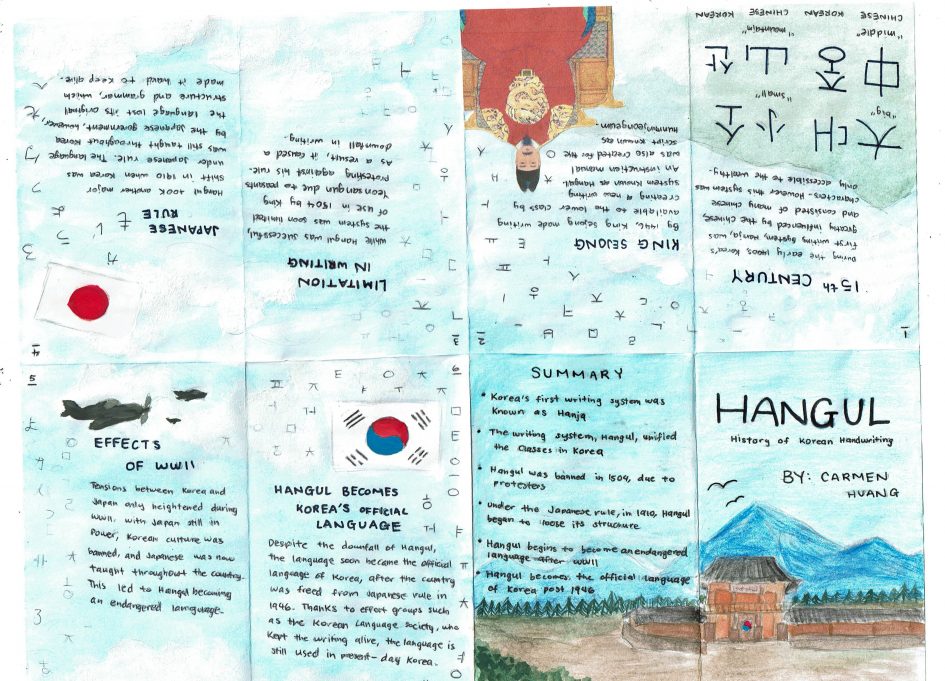After learning about the history of Chinese scripts and their influences on Korean and Japanese for one of my blog posts, I was drawn to learn more about those influences. As a result, I chose to do my zine project on the Korean handwriting, Hangul.
My zine centred mainly on the history of this writing system, talking about the script’s origins and the highs and downfalls of the language. Because of this, I wanted to create imagery that reflected that timeline. I tried including text within the background of each page to demonstrate the different stages of the writing – faded text representing the dying of the script and the use of bold lettering to express the prominence of that specific language. I also wanted the audience to focus on the information, which is the reason why I decided to create a simple background for each spread.
In total, I spent around 11 hours researching and assembling my zine. I would give myself an 8 out of 10 for the project. Midway through using pencilled colours when creating my front cover, I realized how dark the colour would be if it were against text, which would make it hard to read. I decided to switch to watercolour as I wanted to create transparency in the background so that the information would stand out better. As a slight consequence of this last-minute decision, the paper I used was not suitable for watercolours, and became crinkled. I wished I had experimented with more mediums before starting the assembly process. However, despite the change, I feel that the water helped add character to the paper and gave the zine more of an ancient aesthetic, which I was aiming to do. Another thing that I think I could’ve done better is including a section that explained the Korean script, rather than having the information just being solely history-based, which is why I would drop a point.
Overall, this project has helped me learn more about the process of creating zines and the history behind the Korean writing system. The creation of the zine has also allowed me to practice creating layouts to organize information effectively. As a designer, I believe it is necessary to learn how to work in a more traditional medium before stepping into technology, as it builds essential skills. From working on this assignment, I believe I was able to achieve that and practice my abilities.
Research Sources
Chun, Ashley. “How the Creation of Hangul Impacted History.” ArcGIS StoryMaps, Esri, 16 Dec. 2020, https://storymaps.arcgis.com/stories/6138f12bf87c43cfae31b4b72a72488d.
“How to Study Korean.” Hanja Lesson 1: 大, 小, 中, 山, 門, https://www.howtostudykorean.com/hanja-unit-1-lessons-1-20/hanja-lesson-1/.
“Korean Alphabet: A Brief History of Hangul (한글).” What to Do in Korea, Whattodoinkorea, 29 July 2021, https://whattodoinkorea.com/a-brief-history-of-hangeul/.

Leave a Reply